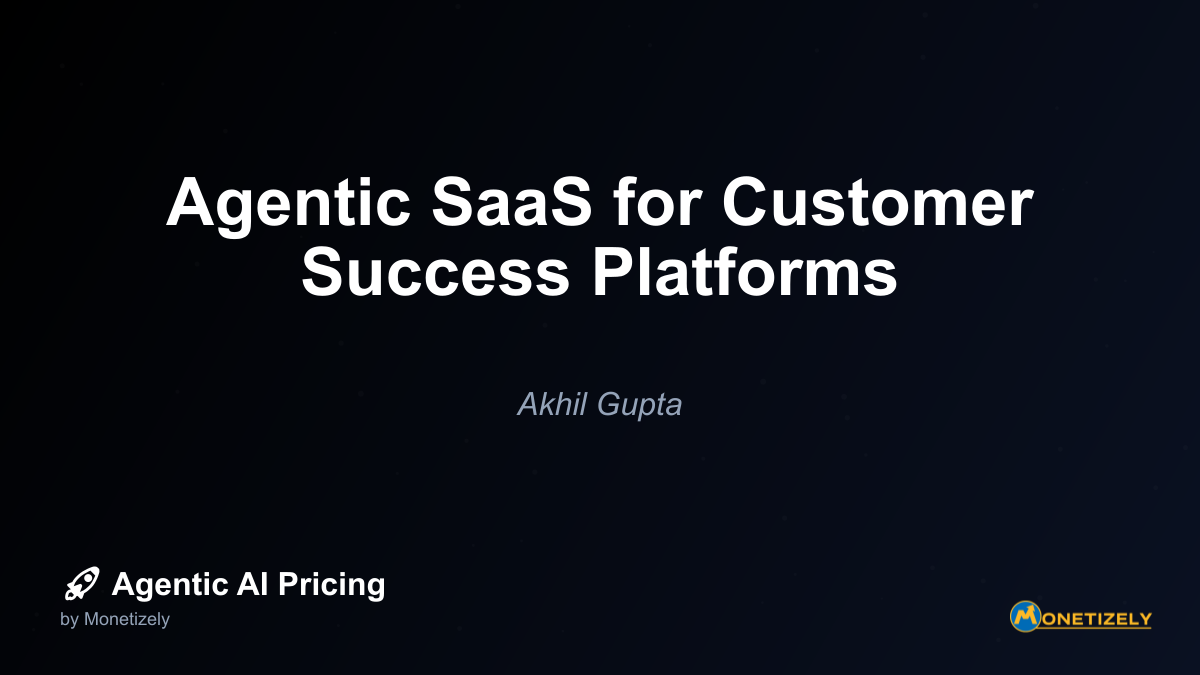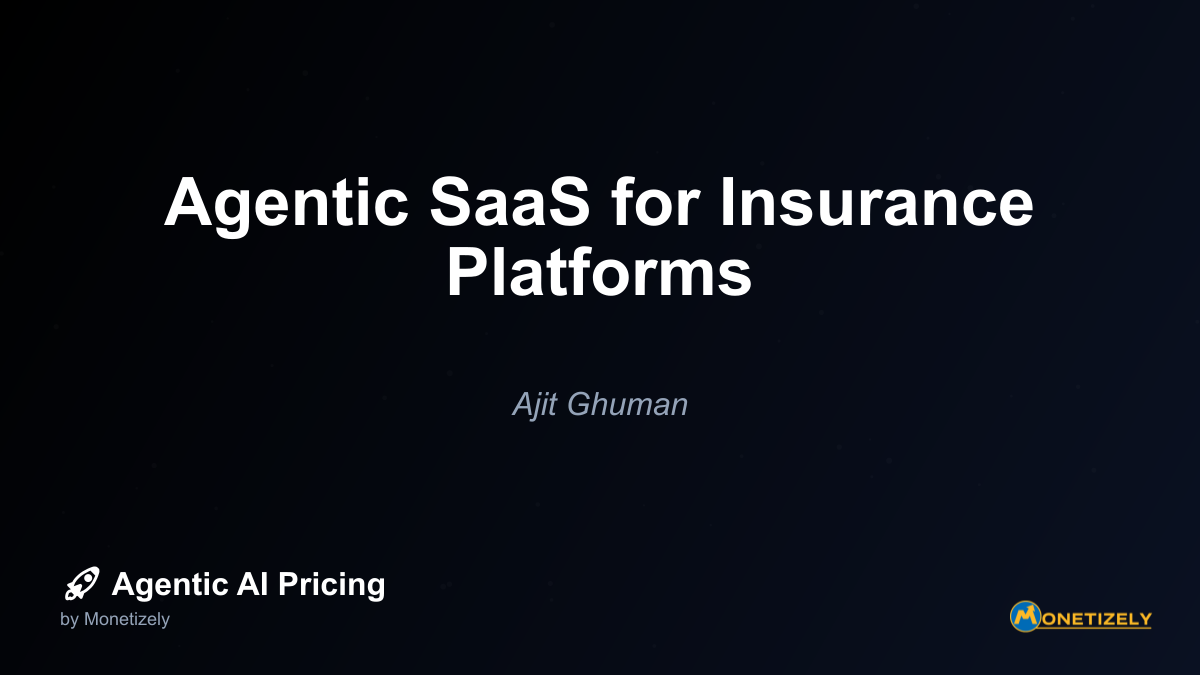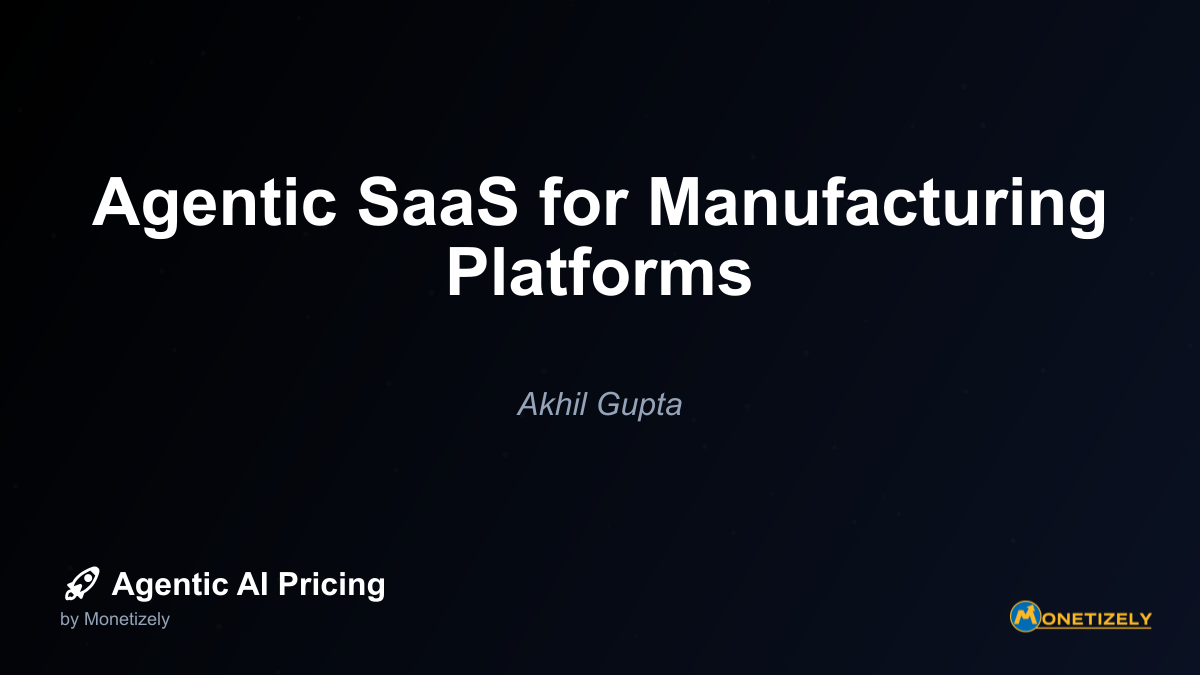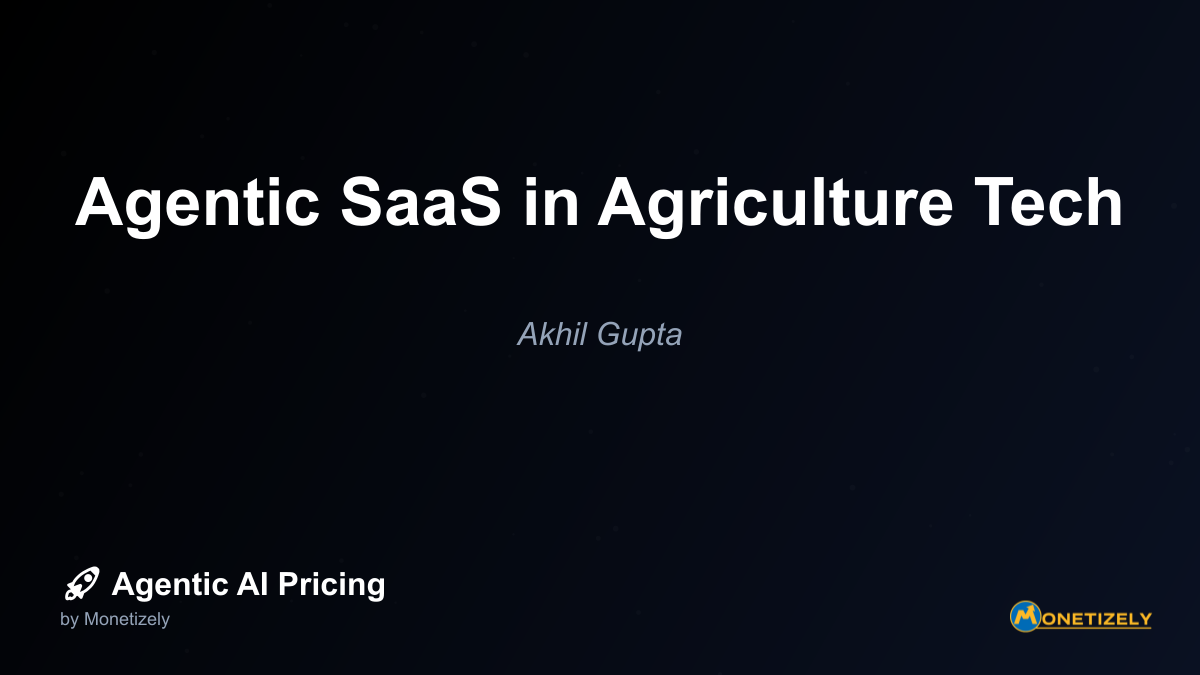· Ajit Ghuman · Vertical Applications · 6 min read
Agentic SaaS for Non-Profits
AI and SaaS Pricing Masterclass
Learn the art of strategic pricing directly from industry experts. Our comprehensive course provides frameworks and methodologies for optimizing your pricing strategy in the evolving AI landscape. Earn a professional certification that can be imported directly to your LinkedIn profile.
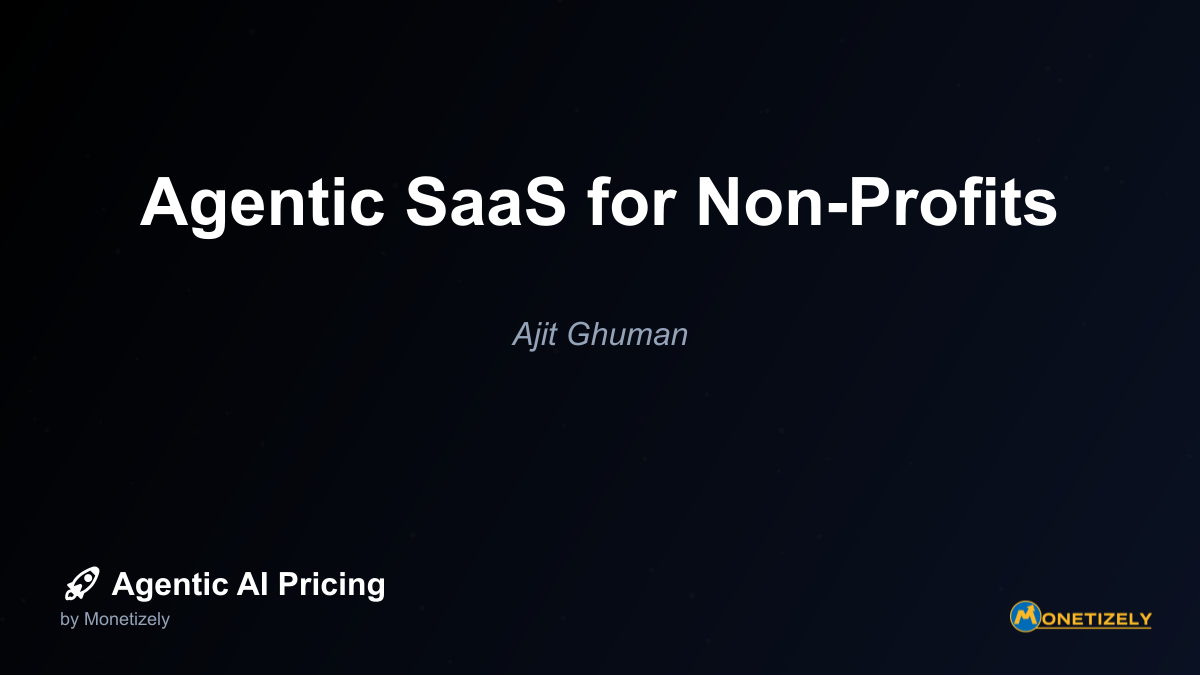
Implementation Challenges for Non-Profits
While the potential benefits are substantial, non-profit organizations face several challenges when implementing agentic AI solutions:
Data Quality and Integration
Many non-profits struggle with fragmented data systems and inconsistent record-keeping. Successful implementation requires:
- Comprehensive data cleaning and standardization
- Integration of multiple legacy systems
- Establishment of data governance protocols
- Development of consistent taxonomies for program areas and donor categories
Without addressing these foundational issues, even the most sophisticated AI agents will struggle to deliver meaningful results.
Ethical Considerations
Non-profits must navigate unique ethical considerations when deploying autonomous systems:
- Transparency with donors about AI-driven communications
- Balancing personalization with privacy concerns
- Ensuring equitable treatment of donors regardless of giving capacity
- Maintaining authentic organizational voice in AI-generated content
Organizations should develop clear ethical guidelines and governance structures before implementing agentic solutions.
Staff Adoption and Skill Development
The introduction of agentic systems requires careful change management:
- Training development staff to collaborate effectively with AI agents
- Defining appropriate human oversight mechanisms
- Creating clear escalation pathways for complex situations
- Developing new metrics for staff performance that incorporate AI collaboration
Successful implementations typically involve a phased approach with clearly defined roles for human team members and their AI counterparts.
Evaluating ROI of Agentic Solutions for Non-Profits
Measuring return on investment requires looking beyond simple cost savings to consider multiple dimensions of value:
Direct Financial Metrics
- Increase in total funds raised
- Reduction in cost-per-dollar-raised
- Improvement in donor retention rates
- Growth in average gift size
Operational Efficiency
- Staff time saved on routine tasks
- Reduction in response time to donor inquiries
- Increased capacity for strategic initiatives
- Improved data quality and accessibility
Mission Advancement
- Enhanced ability to forecast program funding
- More consistent donor communications
- Improved storytelling and impact reporting
- Better alignment of fundraising with program needs
A comprehensive ROI analysis should consider all these dimensions with appropriate weighting based on organizational priorities.
Case Studies: Non-Profits Leveraging Agentic AI
Environmental Conservation Organization
A mid-sized environmental non-profit implemented an agentic donor engagement solution with remarkable results:
- 27% increase in donor retention rate within the first year
- 42% reduction in staff time spent on routine donor communications
- 18% growth in average recurring gift amount
- Successful identification of 200+ major gift prospects previously overlooked
The organization utilized a hybrid pricing model with a base subscription fee plus a 2% performance fee on incremental revenue, resulting in a 14x return on investment.
Community Health Foundation
A foundation supporting local health initiatives deployed an agentic fundraising campaign manager:
- Automated personalization of appeals across 12 different donor segments
- Real-time optimization of digital advertising spend during time-sensitive campaigns
- 35% increase in year-end giving compared to previous year
- Reduction in campaign planning time from 6 weeks to 10 days
The foundation selected an organization size-based pricing tier with additional capacity during peak campaign periods, allowing them to scale their fundraising efforts without adding seasonal staff.
Education Access Non-Profit
A scholarship-focused organization implemented an agentic donor stewardship system:
- Created personalized impact reports for 5,000+ donors showing how their specific contributions affected students
- Developed automated “journey mapping” to move one-time donors toward recurring giving
- Increased second-gift conversion rate by 31%
- Reduced lapsed donor rate by 24%
The organization chose an impact-based pricing model, paying 4% of demonstrable revenue increases, which allowed them to implement the solution with minimal upfront investment.
Future Trends in Non-Profit Agentic Solutions
The landscape of agentic AI for non-profits continues to evolve rapidly. Several emerging trends will shape the next generation of solutions:
Multi-Agent Ecosystems
Rather than single agents handling all tasks, organizations will deploy specialized agents that collaborate:
- Prospect research agents feeding information to donor engagement agents
- Campaign optimization agents coordinating with content creation agents
- Financial forecasting agents informing fundraising strategy agents
- Impact measurement agents providing data to stewardship agents
This approach allows for greater specialization and more sophisticated coordination of fundraising activities.
Emotion-Aware Communications
Advanced natural language capabilities are enabling more emotionally intelligent donor interactions:
- Sentiment analysis to gauge donor feelings toward the organization
- Tone-matching to align communications with donor communication preferences
- Emotional journey mapping to build deeper connections over time
- Empathy-driven response generation for sensitive situations
These capabilities will help preserve the human connection that’s central to philanthropic relationships, even as more communications become AI-driven.
Cross-Organization Collaboration
Emerging platforms will facilitate secure data sharing between complementary non-profits:
- Collaborative prospect identification for organizations with similar donor profiles
- Shared insights about effective messaging strategies
- Coordinated campaign timing to avoid donor fatigue
- Joint impact reporting for donors who support multiple related causes
This collaborative approach, facilitated by agentic systems, could significantly increase the efficiency of the sector as a whole.
Selecting the Right Agentic Solution for Your Non-Profit
When evaluating potential agentic solutions, non-profit organizations should consider several key factors:
Integration Capabilities
The solution should seamlessly connect with existing systems:
- CRM and donor database compatibility
- Integration with email marketing platforms
- Connection to social media management tools
- Compatibility with accounting and financial systems
Customization Options
Non-profits have unique missions and donor bases requiring tailored approaches:
- Ability to incorporate organization-specific language and terminology
- Customizable donor segmentation criteria
- Adjustable risk tolerance for automated decisions
- Configurable approval workflows for different types of communications
Transparency and Control
Organizations need visibility into how agents make decisions:
- Clear explanation of recommendation rationales
- Audit trails for all automated actions
- Adjustable autonomy levels for different functions
- Override capabilities for human team members
Pricing Alignment
The pricing structure should reflect non-profit realities:
- Affordable entry points for smaller organizations
- Scalability as programs grow
- Alignment with fundraising cycles
- Protection against unexpected cost increases
For many non-profits, a hybrid pricing model that combines a modest base fee with performance-based components offers the best balance of accessibility and vendor accountability.
Implementation Best Practices
Organizations can maximize success by following these implementation guidelines:
Start With Defined Use Cases
Rather than attempting a comprehensive rollout, begin with specific applications:
- Year-end giving campaign optimization
- Monthly donor conversion program
- Lapsed donor reactivation
- New donor welcome journeys
This focused approach allows for measurable results and builds organizational confidence in the technology.
Implement Strong Governance
Establish clear boundaries and oversight mechanisms:
- Approval workflows for different types of donor communications
- Regular audits of agent-generated content
- Clear escalation paths for complex situations
- Periodic review of decision criteria and performance metrics
Invest in Change Management
Prepare the organization for new ways of working:
- Comprehensive training for development staff
- Clear communication about roles and responsibilities
- Celebration of early wins to build momentum
- Regular feedback sessions to address concerns
Plan for Continuous Improvement
Design processes that facilitate ongoing refinement:
- Regular review of performance metrics
- Systematic collection of staff feedback
- Periodic reassessment of use cases and priorities
- Ongoing training as capabilities evolve
Conclusion
Agentic SaaS solutions represent a transformative opportunity for non-profit organizations to enhance their fundraising effectiveness and deepen donor engagement. By leveraging these autonomous systems, organizations can overcome resource constraints, deliver more personalized donor experiences, and ultimately increase their mission impact.
The key to success lies in thoughtful implementation that addresses data quality challenges, establishes appropriate ethical guardrails, and invests in staff adoption. Organizations should carefully evaluate pricing models to ensure alignment with their specific needs and financial realities.
As the technology continues to evolve toward multi-agent ecosystems, emotion-aware communications, and cross-organizational collaboration, non-profits that begin implementing these solutions now will develop the institutional knowledge and donor acceptance needed to fully leverage future capabilities.
By approaching agentic AI as a strategic partnership between human expertise and artificial intelligence, non-profit organizations can create more resilient, efficient, and effective development operations that ultimately advance their missions in meaningful ways.
Co-Founder & CEO
Ajit is the author of Price To Scale, a top book on SaaS Pricing and is the Founder of Monetizely. Ajit has led and worked in pricing and product marketing at firms like Twilio, Narvar and Medallia. His work has been featured in Forbes and VentureBeat. Ajit regularly consults with software companies from Seed stage to post-IPO on pricing strategy. Ajit is also a highly-rated co-instructor for 'The Art of SaaS Pricing and Monetization' on Maven.
Pricing Strategy Audit
Let our experts analyze your current pricing strategy and identify opportunities for improvement. Our data-driven assessment will help you unlock untapped revenue potential and optimize your AI pricing approach.

